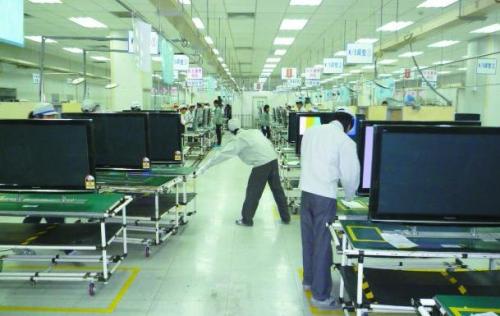 Recently, according to Japanese media reports, Panasonic plans to stop developing plasma panels at the end of 2012. It is reported that Panasonic decided to focus on the development of OLED (also known as organic EL) panels and other market promising products. Plasma panel production will continue in the short term, while TVs and commercial displays will be produced as usual. Flat-panel TVs were once classified as "large-screen plasma and small-screen liquid crystals." However, plasma became increasingly uncompetitive as liquid crystal technology improved, so Panasonic decided to reduce investment.
Recently, according to Japanese media reports, Panasonic plans to stop developing plasma panels at the end of 2012. It is reported that Panasonic decided to focus on the development of OLED (also known as organic EL) panels and other market promising products. Plasma panel production will continue in the short term, while TVs and commercial displays will be produced as usual. Flat-panel TVs were once classified as "large-screen plasma and small-screen liquid crystals." However, plasma became increasingly uncompetitive as liquid crystal technology improved, so Panasonic decided to reduce investment. Shortly after the news was released, Panasonic announced that it was about to shut down its largest plasma TV plant in Shanghai. Although some of the business will shift to LCD TV factories in Shandong, a considerable part of the plasma TV business will stop due to the sharp decline in the sales market. . This means that the world's largest plasma TV maker will further reduce its plasma TV production capacity.
Ten years ago, the first flat-panel TVs that Chinese consumers came into contact with were plasma products brought into China by Panasonic. The 42-inch plasma TV that sold for $78,000 was once a luxury home for many high-end households. With the development of liquid crystal technology, the global flat-panel TV market has gradually formed a pattern of plasma and LCD two competing. Because Panasonic is too conservative about plasma technology, unlike liquid crystal technology, as the open, eventually making more and more TV manufacturers to the embrace of LCD TVs, which makes plasma TV market share shrinking.
At present, LCD TVs have overwhelmed plasma with absolute advantages. For the Chinese market, more than 90% of flat-panel TVs are LCD TVs, and the share of plasma TVs is less than 10%. While Panasonic is determined to abandon plasma technology, the Chinese mainland is gradually deepening into the upstream part of the LCD industry chain.
Related industry sources said that flat-panel TVs were once classified as "large-screen plasma and small-screen liquid crystals." However, with the improvement of liquid crystal technology, plasma has gradually become less competitive, and plasma TVs have far less sales than liquid crystals. For consumers, Panasonic's fading out of the plasma camp does not mean that plasma technology is not as good as liquid crystal, but it is losing to the market. Consumers do not have to worry too much about after-sales, because the companies that sell plasma TVs basically belong to first-tier TV brands, and there will be no problems in the short-term after-sales service.
Dongguan Pinji Electronic Technology Limited , https://www.iqdatacable.com